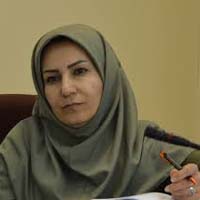Determination of Sedimentation Rate and Verification of Holocene Sediments in Northeastern Part of the Persian Gulf: A Case Study in Southern Bandar Abbas
Author(s):
Abstract:
The Persian Gulf has an area about 240000 km2, considered as the northern part of the counterclockwise movement of Arabian Plate and as a recent example of Holocene carbonated sedimentary environment in dry (arid) climate. The basin volume, regarding to its average depth (36m), is estimated about 87,000km3. The present study was done in order to examine the sea level changes and determine the rate of sedimentation of Holocene deposits in the northeast of Persian Gulf. A complete and undisturbed core from the Holocene deposits (1070 cm length) located in the south of Rajaee port in theHormozgan province was prepared. Following the exact description of this core, based on the objective observations, 52 samples were taken according to the facies divisions and they were sedimentologically and geochemically tested. The granulometric analysis, mineralogy by XRD method, abundance percentage of elements by ICP-OEC device and polarograph, percentage of organic matter by the Rock Eval device, percentage determination of carbonates by automatic calcimeter device were done for all samples and 10 samples were dated by 14C AMS method. The granulometric results indicated that most of the deposits are mud containing sand and gravel. The gravels are mainly related to shell fragments. The amount of carbonates varies from 17 to 84 percent. The silisiclastic deposits include quartz, feldspar, muscovite, pyroxene and clay minerals such as kaolinite, chlorite, montmoryonite, illite and paligorskite. The chemical and biochemical sediments are mainly calcite, dolomite and aragonite. The percentage of organic matter contained in the sediments varies from 0.02 to 0.13. The variation curve of calcium and strontium, which indicates intrabasinal sediments, is correlated to sea level changes in combination with objective evidences such as grain size, sediment type, and amount of organic matter, texture and structure of sediments. The abundance of most elements especially Al, Mg, Mn, Cr, Ba with continental origin, revealed a reversed relation with the sea level variations. In addition, two significant phases of rapid transgression have occurred from 6800 to 3700 and from 9300 to 7900 years ago. The dating results showed that the average rate of sedimentation in the study area is about 1mmper year 966mm/ka).
Keywords:
Language:
Persian
Published:
Geosciences Scientific Quarterly Journal, Volume:24 Issue: 94, 2015
Page:
183
magiran.com/p1393284
دانلود و مطالعه متن این مقاله با یکی از روشهای زیر امکان پذیر است:
اشتراک شخصی
با عضویت و پرداخت آنلاین حق اشتراک یکساله به مبلغ 1,390,000ريال میتوانید 70 عنوان مطلب دانلود کنید!
اشتراک سازمانی
به کتابخانه دانشگاه یا محل کار خود پیشنهاد کنید تا اشتراک سازمانی این پایگاه را برای دسترسی نامحدود همه کاربران به متن مطالب تهیه نمایند!
توجه!
- حق عضویت دریافتی صرف حمایت از نشریات عضو و نگهداری، تکمیل و توسعه مگیران میشود.
- پرداخت حق اشتراک و دانلود مقالات اجازه بازنشر آن در سایر رسانههای چاپی و دیجیتال را به کاربر نمیدهد.
In order to view content subscription is required
Personal subscription
Subscribe magiran.com for 70 € euros via PayPal and download 70 articles during a year.
Organization subscription
Please contact us to subscribe your university or library for unlimited access!



